Volume 139
Displaying 1-9 of 9 articles from this issue
- |<
- <
- 1
- >
- >|
-
Article type: Cover
1991 Volume 139 Pages Cover1-
Published: December 20, 1991
Released on J-STAGE: November 09, 2017
Download PDF (31K) -
Article type: Cover
1991 Volume 139 Pages Cover2-
Published: December 20, 1991
Released on J-STAGE: November 09, 2017
Download PDF (31K) -
Article type: Article
1991 Volume 139 Pages 1-14
Published: December 20, 1991
Released on J-STAGE: November 09, 2017
Download PDF (737K) -
Article type: Article
1991 Volume 139 Pages 15-27
Published: December 20, 1991
Released on J-STAGE: November 09, 2017
Download PDF (643K) -
Article type: Article
1991 Volume 139 Pages 28-37
Published: December 20, 1991
Released on J-STAGE: November 09, 2017
Download PDF (733K) -
Article type: Article
1991 Volume 139 Pages 38-46
Published: December 20, 1991
Released on J-STAGE: November 09, 2017
Download PDF (781K) -
Article type: Article
1991 Volume 139 Pages 47-68
Published: December 20, 1991
Released on J-STAGE: November 09, 2017
Download PDF (1780K) -
Article type: Article
1991 Volume 139 Pages 69-72
Published: December 20, 1991
Released on J-STAGE: November 09, 2017
Download PDF (267K) -
Article type: Article
1991 Volume 139 Pages 73-75
Published: December 20, 1991
Released on J-STAGE: November 09, 2017
Download PDF (628K)
- |<
- <
- 1
- >
- >|
